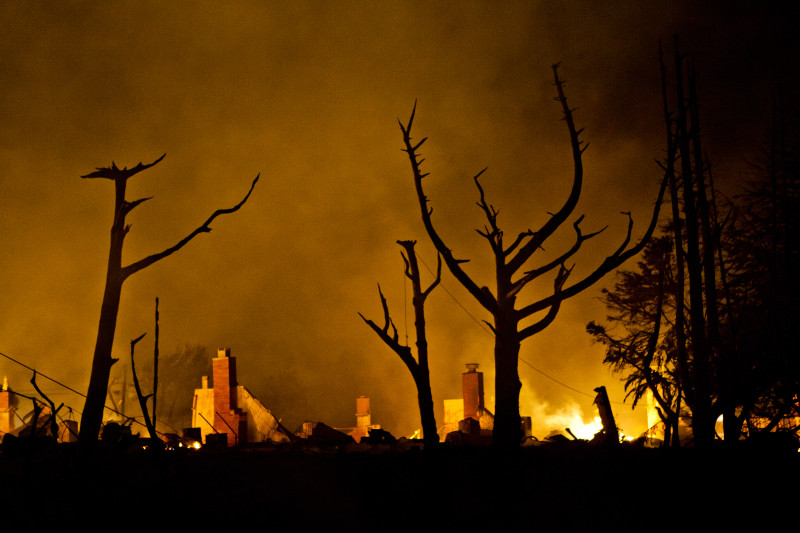CPUC President Michael Picker, who took office in December, acknowledged those improvements in remarks made after the vote. Nonetheless, the takeaway from his comments may very well be his questioning of the commission's ability to oversee PG&E, given that safety lapses have continued well after San Bruno, and that the CPUC is loath to levy penalties great enough to negatively affect the utility's cost of borrowing, as those are sure to be passed along to ratepayers. (You can read his complete comments here.)
From the San Francisco Chronicle's Jaxon Van Derbeken, who has closely followed the San Bruno story from the beginning:
(T)he regulatory agency’s president said the utility continues to have gas-system problems, is able to shrug off even the harshest sanctions the state can muster and may be too big to operate safely.
Even after it promised to make reforms following the September 2010 blast ... PG&E has been cited several times for natural-gas safety violations, commission President Michael Picker noted Thursday at the panel’s meeting in San Francisco. “If, indeed, PG&E is failing to establish a safety culture, and we continue to see more accidents and violations of safety rules, what are our tools?” he said.
“Is the organization simply too large — spread across a sizable portion of a large state, and encompassing diverse functions such as both gas transmission and gas distribution, as well as electric service — to succeed at safety?” Picker said.
Picker said the state’s lawyers would look into the question and did not give details about what steps the commission might take. But he suggested that PG&E’s profitability made it immune even to hefty penalties such as the one the utilities commission approved Thursday on a 4-0 vote.
Other comments from Picker, culled from a release sent out by the commission:
"After the announcement of the Decision Different [Picker's alternate penalty proposal] a month ago, PG&E share value went up 3%. Are shareholders discomfited? I signaled in this proceeding my intent to limit our penalties at $2.45 billion, so as to avoid raising the costs for PG&E to borrow to cover operations that will later be funded through ERRA or other balancing accounts. Clearly the market took this all into account, and so may have little incentive to get engaged on behalf of shareholders. Shareholders simply may be abdicating their responsibility to hold their Board of Directors accountable to state laws and rules, knowing that we have an interest in limiting our sanctions to levels that they, as owners, can live with, so as to avoid impacts on ratepayers, as well. Capital markets, then, are treating fines and penalties as a cost of doing business."
“Do PG&E board directors or executive officers feel CPUC sanctions directly? Is there anyone with authority within the company who is accountable for our fines and penalties? What mechanism holds them accountable? The CEO who held that position [Peter Darbee] at the time of the San Bruno incident, and during cuts in funding pipeline replacement and inspection programs, retired with a reported $38 million bonus. The president of PG&E at the time of the San Bruno incident (Chris Johns) is still the president.”
Picker also discussed the possibility of wielding accountability mechanisms against upper management like those included in the federal Sarbanes-Oxley law, which was enacted in response to the accounting scandals (Enron, Worldcom, et. al.) of the early 2000s:
Can we borrow from the Sarbanes-Oxley model by requiring senior executives and senior management to attest to the veracity and completeness of reports, and holding them accountable for untrue or misleading or incomplete statements? Should we require them to attest that their safety programs will be effective? How would we respond if they fail to build and manage a safe utility? Should we add “clawbacks” to executive compensation or stock options, as has been suggested in the corporate governance literature?
Two Proposals For Penalties and Fine
Before the votebat CPUC headquarters in San Francisco, the four commissioners considered two alternate packages of penalties and fines, one amounting to $1.4 billion and the other, which was eventually approved, totaling $1.6 billion.
The $1.4 billion penalty was proposed by two PUC administrative law judges in September. The $1.6 billion amount was recommended in March by Picker.
The commissioners could have accepted either proposal or could have decided on a modified version with an increased or decreased penalty.
The commission’s fifth member, Mike Florio, did not participate because he voluntarily recused himself after email messages came to light that showed private communications between Florio and PG&E executives in other cases before the commission.
San Bruno officials supported the larger penalty. “We believe this historic penalty sends the right message that gross negligence, corruption and profits-over-safety will no longer be tolerated," said Mayor Jim Ruane last month,
Under both proposals, the costs of the penalties and fines will be absorbed by shareholders and not by customers.
The proposal that passed devotes an $850 million penalty to pipeline safety improvements and levies a $300 million fine to be paid to the state’s general fund.
The alternate proposal by administrative law judges Mark Wetzell and Amy Yip-Kikugawa would have provided a $950 million fine for the general fund.
Both proposals included a $400 million bill credit for customers and $50 million for previously identified improvements.
The proposals were issued in a coordinated case that combines three PUC proceedings that investigated the San Bruno explosion, PG&E record-keeping practices and its pipeline operations in locations with high population density.
The penalty will be added to $635 million for pipeline modernization that the commission previously ruled must be paid by shareholders. The total of the new and previous penalties would be more than $2 billion, the largest in PUC’s history in a safety-related case, according to the commission.
